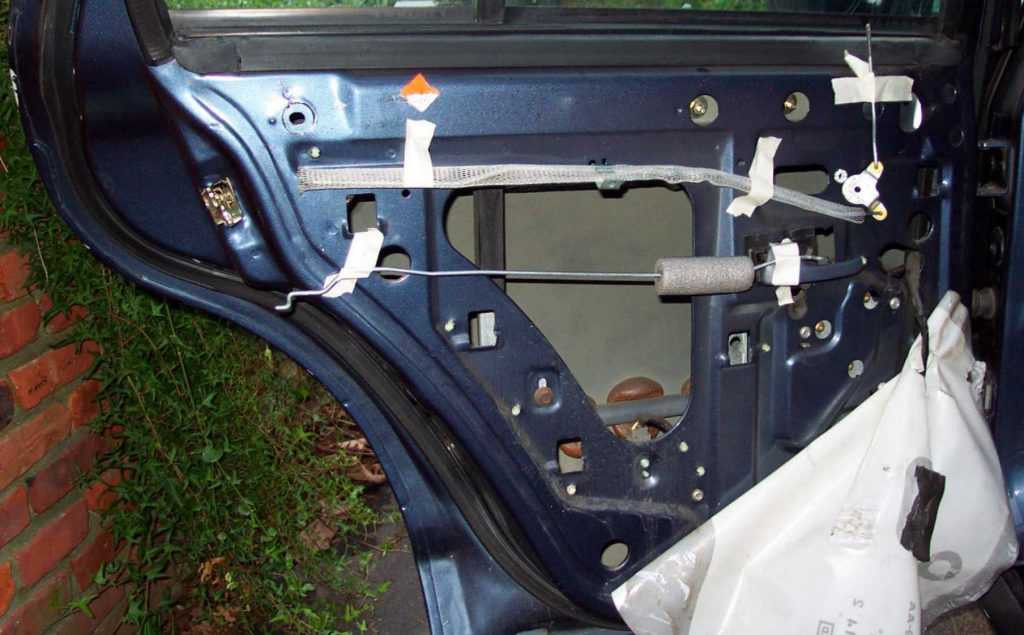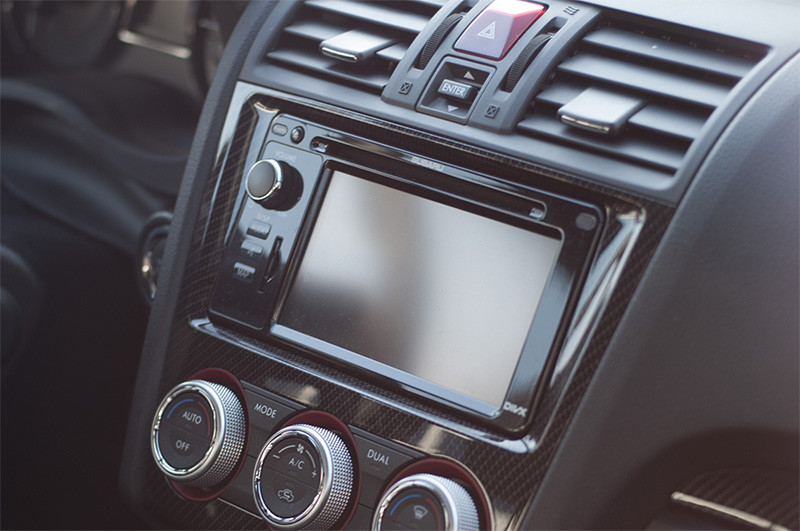**How Much Does It Cost to Fix Car Rotors?**
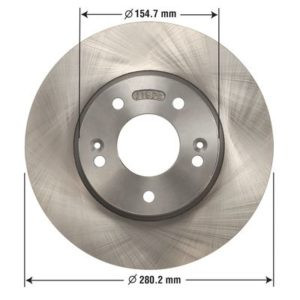
Fixing car rotors involves several factors influencing the overall cost, but understanding them helps you budget wisely and keep your vehicle safe with CARDIAGTECH.NET. We provide solutions for all your vehicle repair needs. Our top-notch tools can assist you with tasks like brake maintenance, helping to ensure every repair is done accurately and efficiently, ultimately saving you time and money. To minimize expenses related to brake repairs, focus on regular maintenance, explore deals on premium aftermarket parts, and think about handling straightforward repairs yourself.
1. Understanding the Role of Brake Rotors
Brake rotors are crucial components of your vehicle’s braking system. How much does it cost to fix car rotors? The cost varies widely based on several factors, but understanding what brake rotors do and what influences their lifespan is the first step in budgeting for this essential maintenance task.
Brake rotors, also known as brake discs, are essential for stopping your car safely. When you press the brake pedal, the brake calipers clamp brake pads against the rotors, creating friction that slows and stops the wheels. Over time, this friction wears down the rotors, potentially leading to reduced braking efficiency and safety concerns. According to a study by the National Highway Traffic Safety Administration (NHTSA), faulty brake systems are a contributing factor in approximately 22% of all vehicle accidents.
 Close-up of brake rotors
Close-up of brake rotors
Brake rotors are essential components of your car’s braking system and play a critical role in safety.
1.1. Identifying Worn or Damaged Rotors
Recognizing the signs of worn or damaged brake rotors is critical for maintaining your vehicle’s safety and preventing more costly repairs down the line. Common symptoms include:
- Squealing or grinding noises: These sounds often indicate that the brake pads are worn down and rubbing against the rotor.
- Vibrations or pulsations: A warped rotor can cause noticeable vibrations in the steering wheel or brake pedal when braking.
- Visible damage: Cracks, deep grooves, or rust on the rotor surface are signs of wear and potential failure.
- Increased stopping distance: If your car takes longer to stop than usual, it could be due to worn rotors reducing braking efficiency.
1.2. Factors Affecting Rotor Lifespan
Several factors influence how long brake rotors last, including:
- Driving Habits: Aggressive braking, frequent stops, and high-speed driving can accelerate wear on rotors.
- Environment: Driving in hilly or mountainous areas, as well as stop-and-go city traffic, puts more stress on brakes.
- Material Quality: The type of metal used in the rotors affects their durability. Higher-quality rotors tend to last longer.
- Brake Pad Type: Different brake pad materials can affect rotor wear. Softer pads may be gentler on rotors than harder, metallic pads.
2. Factors Influencing the Cost to Fix Car Rotors
The cost to fix car rotors can vary widely. Here are the key factors that influence the overall price of this essential repair.
2.1. Type of Vehicle
The make and model of your vehicle significantly impact brake repair costs. Luxury and performance vehicles often have specialized braking systems that require more expensive parts. For example, replacing rotors on a high-performance sports car can cost significantly more than on a standard sedan.
Example Costs:
| Vehicle Type | Rotor Replacement Cost (Per Axle) |
|---|---|
| Standard Sedan | $200 – $400 |
| Luxury Sedan | $350 – $600 |
| Performance Sports Car | $500 – $1000+ |
| Truck/SUV | $250 – $500 |
2.2. Rotor Material
The material composition of the rotors also affects the price. Common types include:
- Cast Iron: Standard and most affordable option.
- Drilled/Slotted: Designed for better heat dissipation, more expensive.
- Ceramic: High-performance, offering longer life and better stopping power, but pricier.
Cost Comparison:
| Rotor Type | Cost (Each) | Performance Characteristics |
|---|---|---|
| Cast Iron | $30 – $75 | Standard, reliable |
| Drilled/Slotted | $75 – $150+ | Enhanced cooling |
| Ceramic | $150 – $300+ | High-performance, durable |
2.3. Labor Costs
Labor costs vary widely depending on the location and the shop’s hourly rate. Dealerships typically charge more than independent auto shops.
According to a 2023 report by RepairPal, the national average labor cost for brake rotor replacement ranges from $80 to $150 per rotor.
Labor Cost Factors:
- Location: Urban areas tend to have higher labor rates.
- Shop Type: Dealerships vs. independent shops.
- Complexity: Some vehicles require more time to replace rotors.
2.4. New vs. Resurfaced Rotors
When your rotors are worn but not severely damaged, you might have the option to resurface them instead of replacing them. Resurfacing involves machining the rotor surface to make it smooth again. However, this option is not always available or recommended, as it reduces the rotor’s thickness and can compromise its ability to dissipate heat.
Cost Comparison:
| Option | Cost (Per Rotor) | Pros | Cons |
|---|---|---|---|
| Resurfacing | $20 – $40 | Lower cost, environmentally friendly | Reduces rotor thickness, not always possible, may not last as long |
| New Rotors | $30 – $300+ | Restores original performance, longer lifespan, safer | Higher cost |
2.5. Additional Repairs
Sometimes, fixing car rotors involves more than just replacing the rotors themselves. Other components may need attention, such as:
- Brake Pads: It’s generally recommended to replace brake pads whenever you replace rotors to ensure optimal braking performance.
- Calipers: If the calipers are sticking or damaged, they may need to be repaired or replaced.
- Brake Hoses: Damaged or deteriorated brake hoses can affect braking performance and should be replaced.
These additional repairs will add to the overall cost, but addressing them can prevent further issues and ensure your braking system is in top condition.
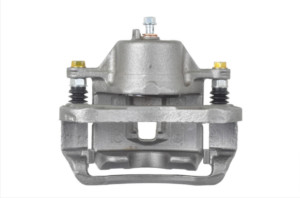 Brake caliper with brake pads and rotor
Brake caliper with brake pads and rotor
Brake calipers, pads, and rotors work together in the braking system. Addressing all worn parts during a repair ensures optimal performance and safety.
3. Average Cost to Fix Car Rotors: A Detailed Breakdown
To provide a clear understanding of potential costs, let’s break down the average expenses associated with fixing car rotors.
3.1. Cost of Parts
The cost of brake rotors can vary based on the type of vehicle and the quality of the parts. Here is a general estimate:
- Standard Rotors (Cast Iron): $30 – $75 each
- Premium Rotors (Drilled/Slotted, Ceramic): $75 – $300+ each
Brake Pad Costs (Per Axle):
- Organic: $20 – $50
- Semi-Metallic: $30 – $70
- Ceramic: $50 – $150
3.2. Labor Costs
Labor costs can fluctuate depending on your geographic location and the specific repair shop. Generally, you can expect to pay:
- Rotor Replacement (Per Rotor): $80 – $150
- Brake Pad Replacement (Per Axle): $50 – $120
3.3. Total Cost Estimates
Considering parts and labor, here are some total cost estimates for different scenarios:
Scenario 1: Standard Rotor and Pad Replacement (Per Axle)
- Parts: Rotors ($60 – $150) + Pads ($30 – $70) = $90 – $220
- Labor: Rotors ($160 – $300) + Pads ($50 – $120) = $210 – $420
- Total: $300 – $640
Scenario 2: Premium Rotor and Pad Replacement (Per Axle)
- Parts: Rotors ($150 – $600+) + Pads ($50 – $150) = $200 – $750+
- Labor: Rotors ($160 – $300) + Pads ($50 – $120) = $210 – $420
- Total: $410 – $1170+
Scenario 3: Additional Caliper Replacement (Per Caliper)
- Parts: Caliper ($80 – $200+)
- Labor: Caliper ($50 – $150)
- Total Additional Cost: $130 – $350+ per caliper
4. DIY vs. Professional Brake Rotor Replacement
Deciding whether to replace brake rotors yourself or hire a professional depends on your mechanical skills, available time, and comfort level.
4.1. DIY Brake Rotor Replacement
Pros:
- Cost Savings: You save on labor costs, which can be a significant portion of the total expense.
- Control: You have complete control over the parts used and the quality of the work.
- Learning Experience: It can be a rewarding experience to learn about your car’s braking system.
Cons:
- Time Commitment: Replacing rotors can take several hours, especially if you’re not experienced.
- Tool Investment: You’ll need specific tools, such as a wrench set, jack, jack stands, and potentially a brake caliper compressor.
- Safety Risks: Improper installation can lead to brake failure and serious accidents.
- Warranty Issues: Incorrect work can void any manufacturer warranty.
Estimated DIY Costs (Per Axle):
- Parts (Rotors and Pads): $90 – $750+ (depending on quality)
- Tools (if needed): $50 – $200+
4.2. Professional Brake Rotor Replacement
Pros:
- Expertise: Certified mechanics have the knowledge and experience to perform the job correctly.
- Convenience: You save time and effort.
- Warranty: Professional repairs often come with a warranty on parts and labor.
- Safety: Ensures the job is done safely and correctly.
Cons:
- Higher Cost: Labor costs can significantly increase the overall expense.
- Less Control: You rely on the shop to choose the parts and perform the work.
4.3. Making the Decision
Consider these factors when deciding between DIY and professional brake rotor replacement:
- Mechanical Skills: Are you comfortable working on your car’s brakes?
- Time Availability: Do you have the time to dedicate to the repair?
- Tool Access: Do you have the necessary tools, or will you need to buy them?
- Budget: How much are you willing to spend?
- Safety: Are you confident you can perform the job safely and correctly?
If you’re unsure, it’s always best to consult with a professional mechanic to ensure your car’s braking system is in good working order.
5. Choosing the Right Brake Rotors
Selecting the right brake rotors is essential for ensuring optimal braking performance and safety.
5.1. Rotor Types
- Solid Rotors: These are the most common type, typically made of cast iron. They are suitable for standard driving conditions.
- Vented Rotors: These rotors have internal fins that help dissipate heat, making them ideal for vehicles that do a lot of towing or driving in hilly areas.
- Drilled Rotors: These rotors have holes drilled through the surface, which helps to improve cooling and reduce brake fade.
- Slotted Rotors: These rotors have slots cut into the surface, which helps to remove debris and water from the braking surface.
- Ceramic Rotors: These rotors are made from a ceramic composite material that offers excellent heat resistance and braking performance. They are typically used in high-performance vehicles.
5.2. Material Quality
The quality of the rotor material is crucial for its durability and performance. Look for rotors made from high-quality cast iron or other durable materials. Premium rotors may have coatings or treatments that help prevent rust and corrosion.
5.3. Brand Reputation
Choose rotors from reputable brands known for producing high-quality brake components. Some popular brands include:
- Duralast: Offers a range of brake rotors and pads for various vehicles.
- Bosch: Known for their high-quality automotive components.
- Akebono: Specializes in ceramic brake pads and rotors.
- EBC Brakes: Offers a wide range of performance brake products.
5.4. Vehicle Requirements
Make sure to choose rotors that are specifically designed for your vehicle’s make and model. Check your owner’s manual or consult with a mechanic to determine the correct rotor size and specifications for your car.
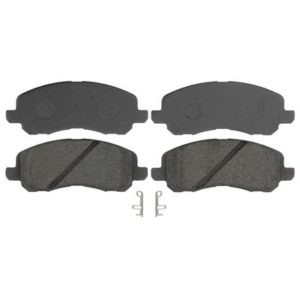 Various types of brake rotors: solid, vented, drilled, and slotted
Various types of brake rotors: solid, vented, drilled, and slotted
Different brake rotor designs cater to different driving needs and vehicle types, influencing performance and cost.
6. Tips for Saving Money on Brake Rotor Repairs
Brake repairs can be expensive, but there are several ways to save money without compromising safety.
6.1. Get Multiple Quotes
Before committing to a repair shop, get quotes from several different mechanics. This will give you a better idea of the average cost in your area and allow you to compare prices.
6.2. Look for Discounts and Specials
Many auto repair shops offer discounts or specials on brake services. Check for coupons or promotions online or in local newspapers.
6.3. Use Aftermarket Parts
Aftermarket parts can be a more affordable alternative to OEM (Original Equipment Manufacturer) parts. However, make sure to choose high-quality aftermarket parts from reputable brands.
6.4. Perform Regular Maintenance
Regular brake maintenance can help prevent costly repairs down the road. Check your brake pads and rotors regularly and replace them when they are worn.
6.5. Consider DIY Repairs
If you are comfortable working on your car, consider doing the brake rotor replacement yourself. This can save you a significant amount on labor costs.
7. Maintaining Your Brake System to Extend Rotor Life
Proper maintenance can significantly extend the life of your brake rotors and save you money on repairs.
7.1. Regular Inspections
Inspect your brakes regularly for signs of wear or damage. Check the thickness of your brake pads and the condition of your rotors. Look for cracks, grooves, or other signs of damage.
7.2. Proper Driving Habits
Avoid aggressive braking and riding the brakes. These habits can cause excessive wear on your rotors.
7.3. Brake Fluid Maintenance
Change your brake fluid according to the manufacturer’s recommendations. Old brake fluid can become contaminated with moisture, which can corrode brake components.
7.4. Cleaning and Lubrication
Keep your brake components clean and lubricated. This can help prevent rust and corrosion and ensure that the brakes function properly.
7.5. Addressing Issues Promptly
If you notice any problems with your brakes, such as squealing, grinding, or vibrations, have them inspected and repaired as soon as possible. Ignoring these issues can lead to more extensive damage and costly repairs.
8. Common Brake Rotor Problems and Their Solutions
Understanding common brake rotor problems can help you identify issues early and take appropriate action.
8.1. Warped Rotors
Warped rotors can cause vibrations or pulsations when braking. This is often caused by excessive heat buildup or uneven wear.
Solution: Resurface or replace the rotors.
8.2. Cracks and Grooves
Cracks and grooves on the rotor surface can reduce braking performance and safety.
Solution: Replace the rotors.
8.3. Rust and Corrosion
Rust and corrosion can cause the rotors to wear unevenly and reduce braking efficiency.
Solution: Clean the rotors with a wire brush or replace them if the corrosion is severe.
8.4. Excessive Wear
Over time, brake rotors can wear down to the point where they are no longer effective.
Solution: Replace the rotors when they reach the minimum thickness specified by the manufacturer.
9. Why Choose CARDIAGTECH.NET for Your Automotive Repair Needs?
At CARDIAGTECH.NET, we understand the challenges you face as auto repair professionals. The physical demands, constant need for updated knowledge, and pressure to deliver efficient, high-quality service are significant. That’s why we offer a comprehensive range of tools and equipment designed to enhance your efficiency, accuracy, and overall service quality.
9.1. High-Quality Tools and Equipment
Our selection of diagnostic tools, brake service equipment, and other essential automotive tools are sourced from leading manufacturers. These tools are designed to help you:
- Diagnose problems quickly and accurately.
- Reduce repair times.
- Ensure precise and safe repairs.
9.2. Expert Support and Guidance
We provide more than just tools; we offer expert support to help you choose the right equipment for your specific needs. Our team can assist you with:
- Product selection and guidance.
- Technical support and troubleshooting.
- Training resources to maximize the use of your tools.
9.3. Enhance Your Garage’s Efficiency and Profitability
By investing in high-quality tools from CARDIAGTECH.NET, you can:
- Improve your shop’s efficiency and productivity.
- Reduce errors and rework.
- Increase customer satisfaction and loyalty.
- Ultimately, boost your revenue and profitability.
We encourage you to reach out to us at CARDIAGTECH.NET to learn more about how our tools can transform your auto repair business. Our location is at 276 Reock St, City of Orange, NJ 07050, United States and our Whatsapp number is +1 (641) 206-8880. Let us help you equip your garage with the best tools in the industry.
10. FAQs About Brake Rotor Repair
10.1. How do I know if my brake rotors need to be replaced?
Common signs include squealing or grinding noises when braking, vibrations in the steering wheel, and visible damage on the rotor surface.
10.2. Can I just replace my brake pads and not the rotors?
It’s generally recommended to replace both brake pads and rotors at the same time to ensure optimal braking performance.
10.3. How long do brake rotors typically last?
Brake rotors typically last between 30,000 and 70,000 miles, depending on driving conditions and maintenance.
10.4. Is it safe to drive with warped brake rotors?
Driving with warped brake rotors can be dangerous and should be avoided. Have your brakes inspected and repaired as soon as possible.
10.5. What is the difference between resurfacing and replacing brake rotors?
Resurfacing involves machining the rotor surface to make it smooth again, while replacing involves installing new rotors. Resurfacing is not always possible or recommended, as it reduces the rotor’s thickness.
10.6. Can I replace brake rotors myself?
Replacing brake rotors yourself is possible if you have the necessary mechanical skills and tools. However, it’s important to follow safety guidelines carefully and ensure the job is done correctly.
10.7. Are premium brake rotors worth the extra cost?
Premium brake rotors can offer better performance, durability, and heat resistance. However, they may not be necessary for all vehicles or driving conditions.
10.8. How can I extend the life of my brake rotors?
Proper maintenance, including regular inspections, proper driving habits, and brake fluid maintenance, can help extend the life of your brake rotors.
10.9. What are the best brands of brake rotors?
Some popular brands of brake rotors include Duralast, Bosch, Akebono, and EBC Brakes.
10.10. Where can I find a trusted mechanic to replace my brake rotors?
You can find a trusted mechanic by asking for recommendations from friends and family, checking online reviews, and looking for certified mechanics in your area.



